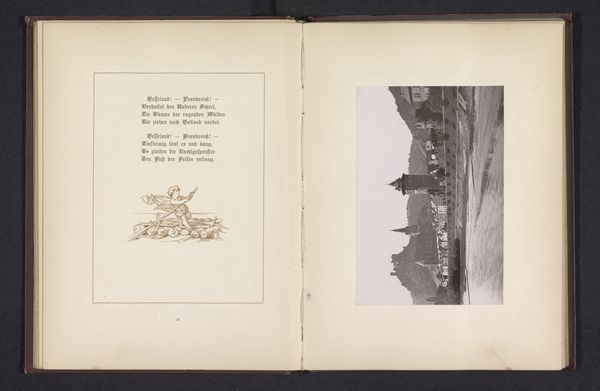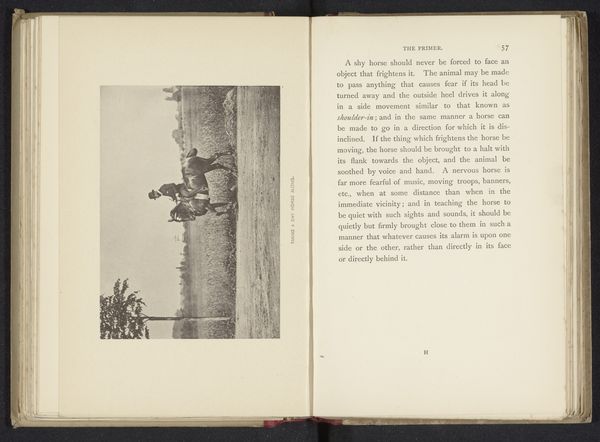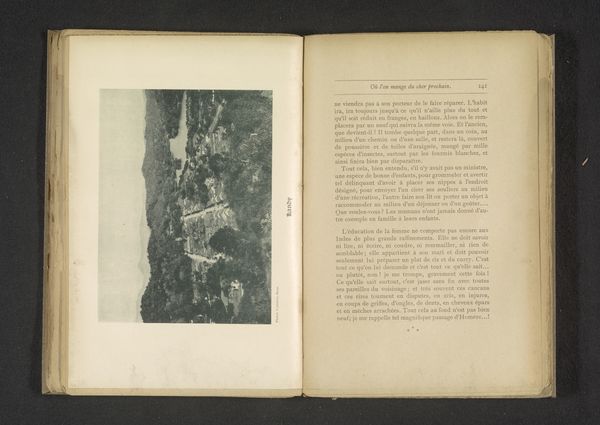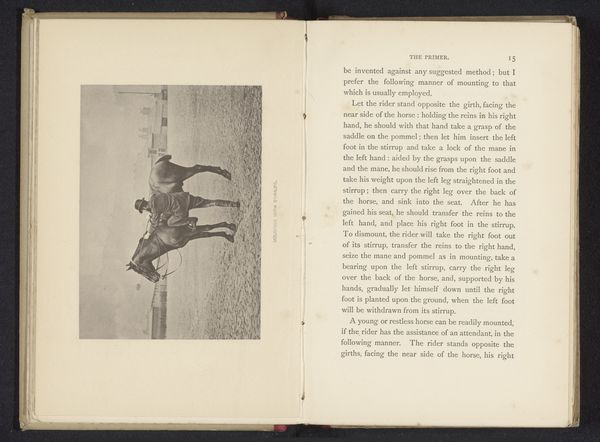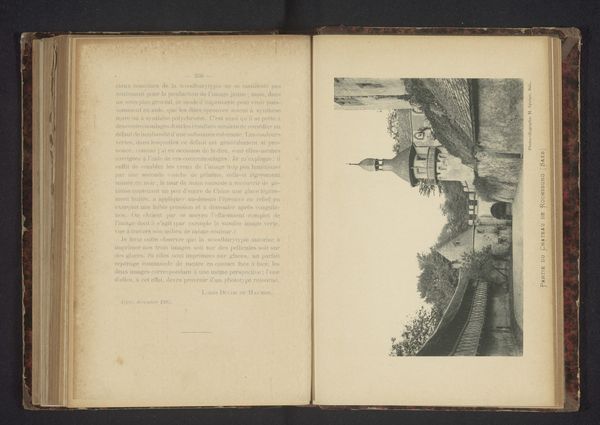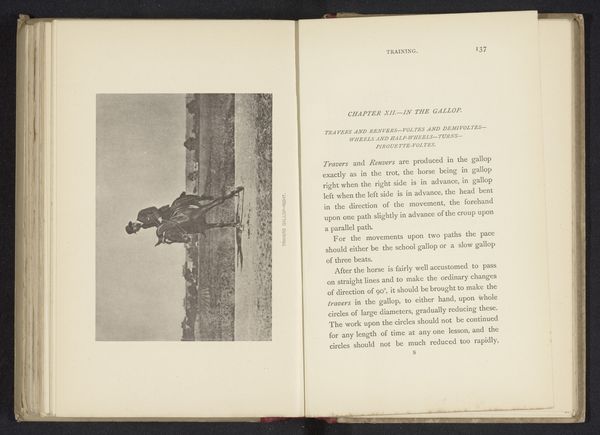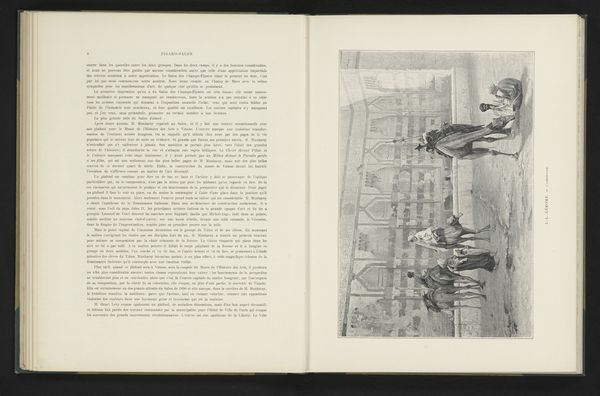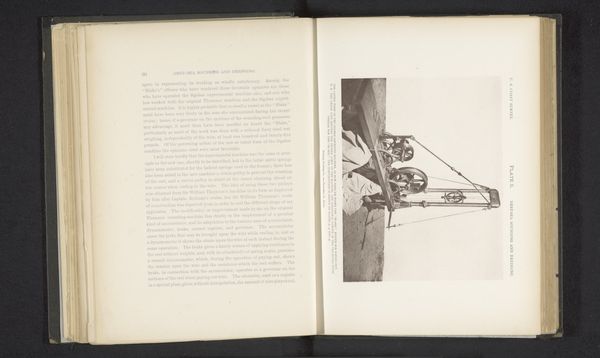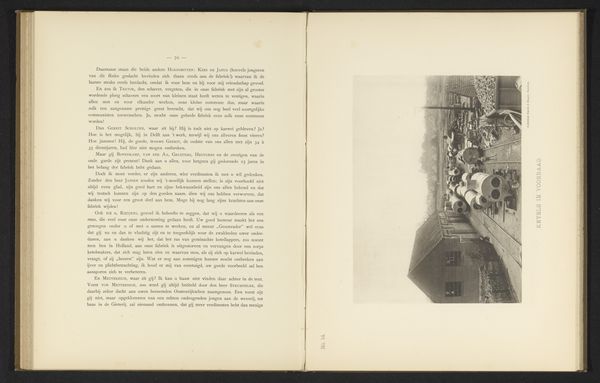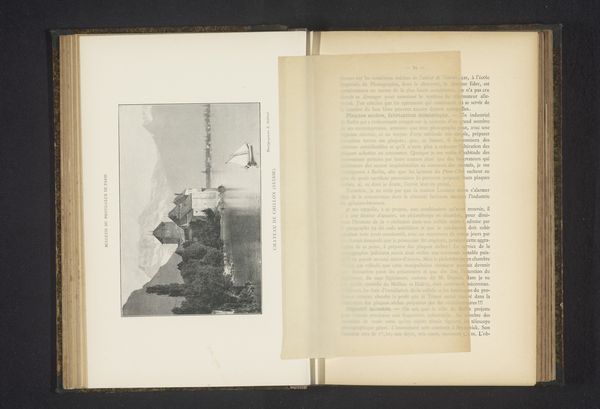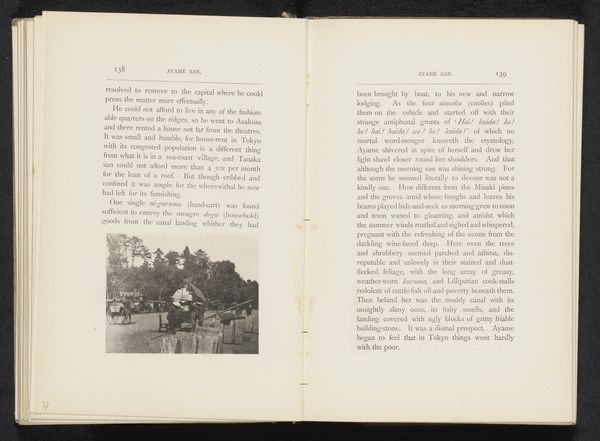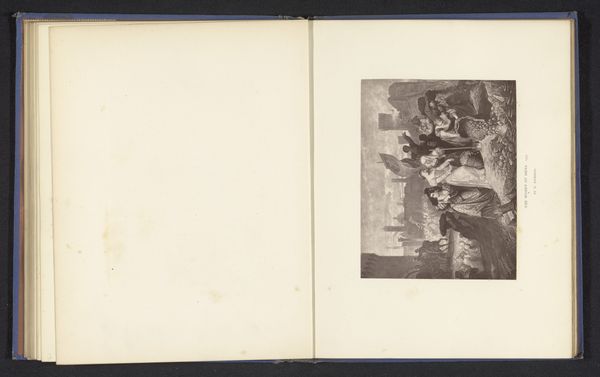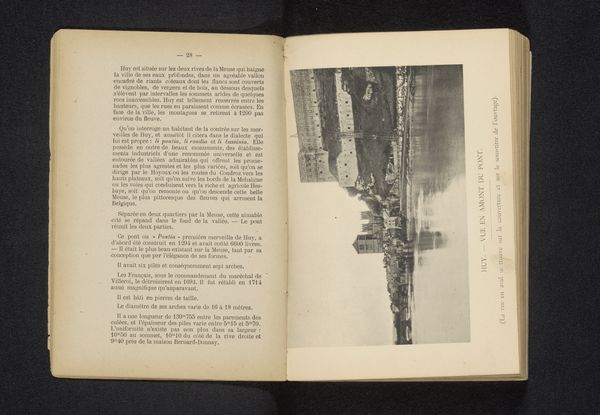
print, photography, albumen-print
#
portrait
# print
#
landscape
#
photography
#
group-portraits
#
watercolour illustration
#
watercolor
#
albumen-print
#
realism
Dimensions: height 124 mm, width 172 mm
Copyright: Rijks Museum: Open Domain
Curator: Looking at this photograph by Frank Meadow Sutcliffe, taken before 1893 and presented as an albumen print, what catches your eye first? Editor: It’s hauntingly beautiful. The grey tones and somewhat blurred details create this air of solemnity and timelessness. It's hard to ignore the weight of labour and family responsibility etched on the man's face, especially with those burdens weighing him down as he leads the family unit away from the shore and towards an implied domestic sphere. Curator: That's perceptive. Sutcliffe gained recognition for capturing the everyday lives of working-class people in Whitby, England. This image, titled "Man en vrouw met twee kinderen," encapsulates that approach. What strikes me is how this genre challenges the conventional representation of labour and identity within the established photographic discourse of his time. Editor: Absolutely. The staging might be partly idealized – the family is neatly arranged in an otherwise dynamic setting – but it gives presence and a humanising aspect that we see to varying degrees in his works. What sociopolitical message, in your view, do you suppose Sutcliffe intended with the photo? The labor, migration and perhaps other political issues of the working classes. Curator: His photographs entered into various illustrated papers and social documentation projects; the political potential of visual media had implications for ideas about nation, place and identity. While there are elements that can romanticise rural poverty and hardship, I would agree the realism makes the conditions palpable for an early-modern audience, with these more sober implications providing an important balance. It perhaps aimed to create empathy. Editor: Exactly, you notice too what I notice, a sober rendering devoid of excess that could create the wrong kind of drama for an era steeped in artifice. There is, also, much left unsaid: you want to imagine and reimagine these figures as more and more, caught on the cogs of time and the demands of everydayness. I’m left admiring how the mundane transforms into something deeply affecting. Curator: It’s true. This piece leaves one with much to consider about artistic and cultural movements. A vital historical work, from the gaze to the material reality. Editor: I second that thought! This particular portrait asks poignant questions about working families; what burdens were the families struggling with, in those days? This album leaf of work by Frank Meadow Sutcliffe can thus trigger profound reflections in a brief view.
Comments
No comments
Be the first to comment and join the conversation on the ultimate creative platform.
